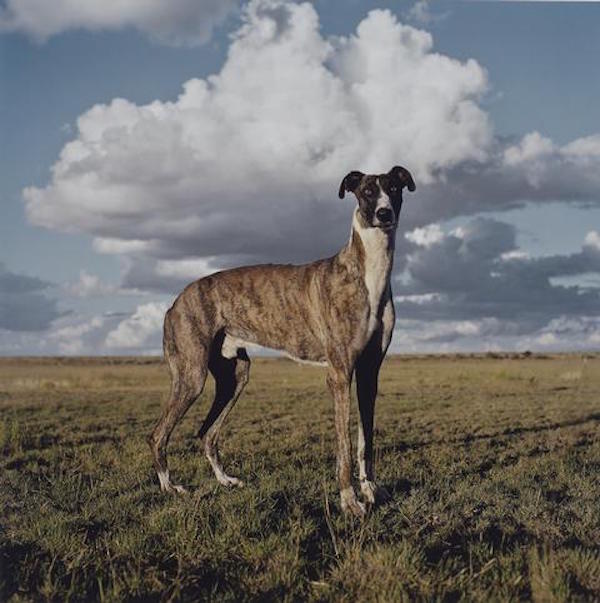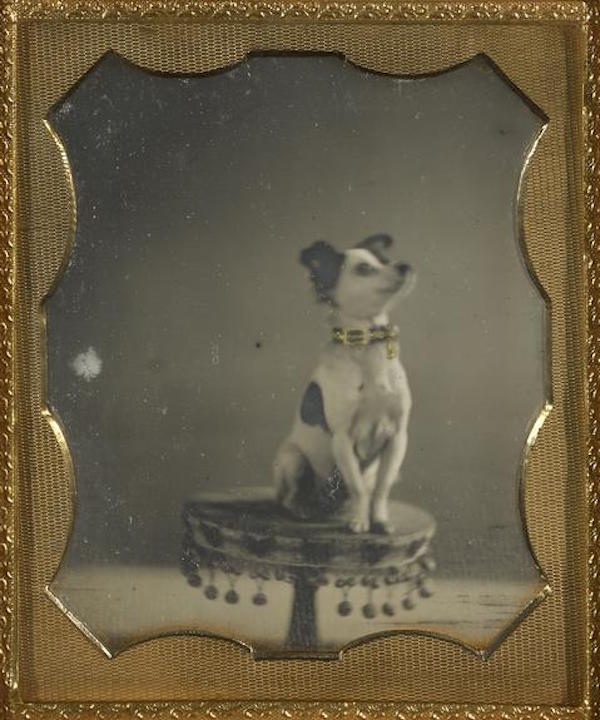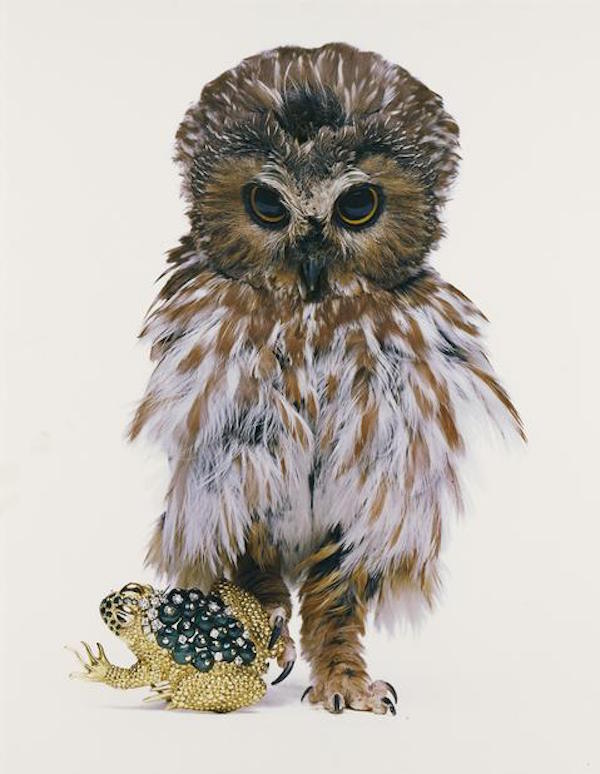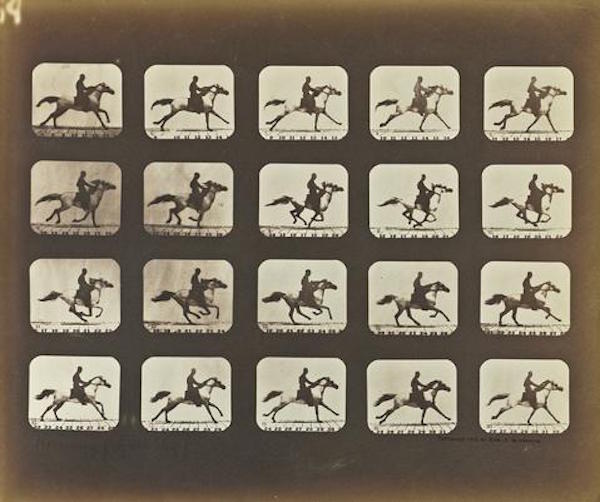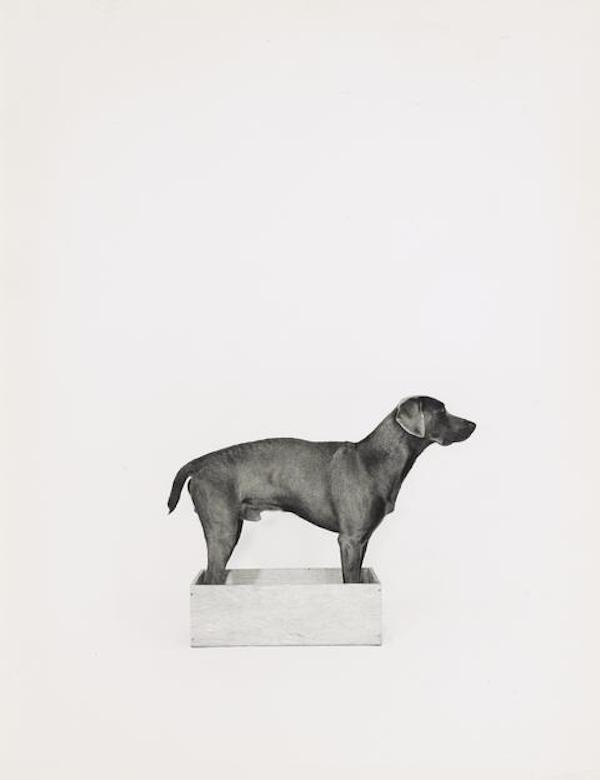If your kids have an Instagram account, chances are their feeds are sprinkled with cute photographs of a Dachshund and a Weimaraner who pal around and go by the screen name of @harlowandsage, the photogenic @biddythehedgehog, or up-and-comer @paws_the_cat (full disclosure: Paws is my feline nephew). Since a fascination with animal photography is now so much a part of popular culture, it’s a good time to round up your family and visit the Getty, where the new photography exhibition In Focus: Animalia has just opened.
Daniel Naudé (South African, born 1984) Africanis 17. Danielskuil, Northern Cape, 25 February 2010, 2010
This is not a huge, wide-ranging exhibition about our furry and feathered friends. Rather, it is a small, focused look at some of the complex relationships between people and animals, and the role photography has played in capturing these interactions over time. And while it includes several images of beautiful wild animals and beloved pets—including Dog Sitting on a Table, a daguerreotype from about 1854 that surely required impressive obedience from the little dog to sit still for the long exposure that would have been required to take this image—there are also darker images.
Unknown maker, American [Dog sitting on a table], about 1854 American Hand-colored daguerreotype
Taxidermied game appear a few times, especially in early photographs since the quick shutter speed to take pictures of live animals in motion had not yet been developed. Taryn Simon’s 2007 photograph of a mentally retarded, caged white tiger demonstrates the often-debilitating results of inbreeding practices, in this case employed to obtain the desired trait of a white coat.
Hiro (American, born China, born 1930) David Webb, Jeweled Toad, New York, 1963
There are also numerous pictures that evoke whimsy or fantasy, such as Sandy Skoglund’s dreamy Revenge of the Goldfish (1981), in which a plethora of beautiful orange fish appear to swim around a blue bedroom. Famed photographer William Wegman is represented with the diptych In the Box/Out of the Box (1971), wherein his regal dog appears in profile. And Hiro’s elegant color photograph of a fluffy owl clawing a jeweled toad sculpture has a definite allure.
Eadweard J. Muybridge (American, born England, 1830 – 1904) Running (Galloping), 1878 – 1881
Also included in the exhibition is Eadweard Muybridge’s 1878–81 series of photographs of Occident, the prized thoroughbred that belonged to American industrialist Leland Stanford (founder of Stanford University). To prove a scientific theory that at times during a horse’s gallop, all four of the animal’s hooves are off the ground at once, Stanford commissioned Muybridge to photograph Occident as he galloped along a racetrack. To conduct the experiment, Muybridge devised an elaborate system of multiple cameras and succeeded in taking enough pictures to effectively halt the motion of the speeding horse, proving the theory correct.
In total, In Focus: Animalia offers deep insights into the human-animal dynamic. With works ranging from 1841–2009, and including pictures by some of the world’s most-recognized photographers such as Alfred Steiglitz, Lisette Model, André Kertész, and others, this exhibition spans the history of photography and reveals how advancements in the medium changed how we photographed animals and eventually lead to the profusion of animal images—cute and otherwise—that populate our visual culture today.
TIP: This is a small exhibition that can be visited in a relatively short time. To extend your trip and stay with the animal theme of day, bring a camera and give children a chance to photograph birds, butterflies, and lizards (if you can find them!) in the Getty’s wonderful Central Garden. For kids who are interested in more time in the galleries, head upstairs to the paintings area to see the many animals that can be spotted in those works. Two noted paintings to seek out are The "Piebald" Horse by Dutch painter Paulus Potter and The Entry of the Animals into Noah's Ark by Flemish master Jan Brueghel.
The Getty Center is open Tuesday–Friday and Sunday 10 am–5:30 pm, Saturday 10 am–9 pm, and closed Monday. Admission is free, but parking is $15 ($10 after 5 pm).
Animalia Getty Center: 1200 Getty Center Drive, Los Angeles, California 90049/ 310-440-7300
Written by Stacey Ravel Abarbanel

